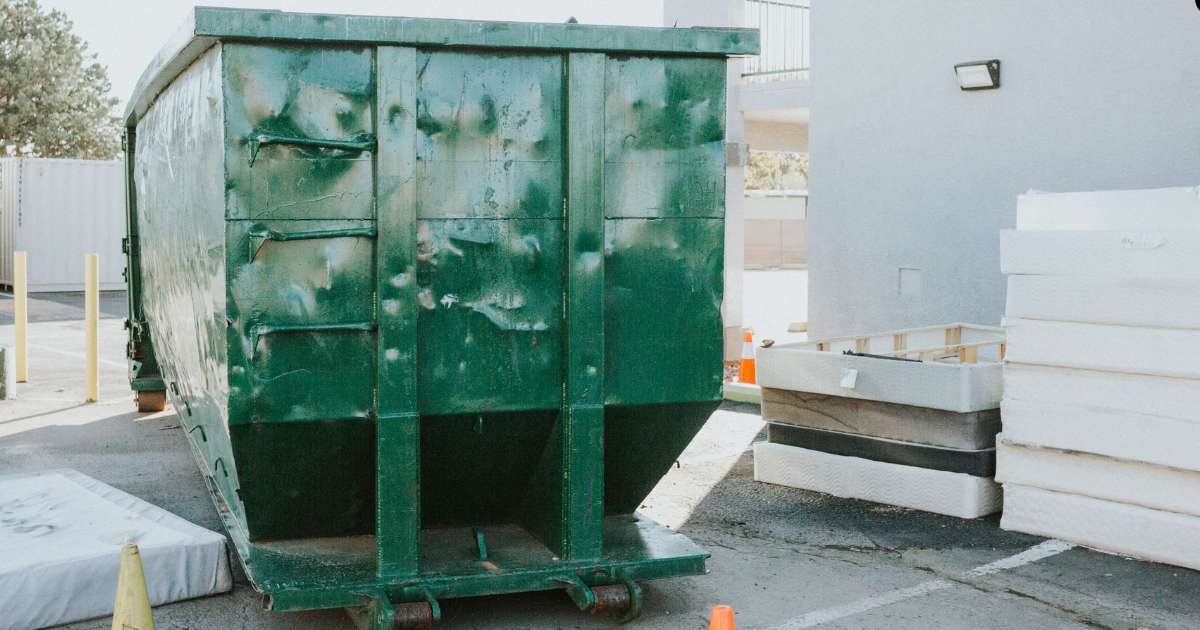Renting a dumpster can simplify the process of managing waste during home renovations, cleanouts, or construction projects. However, determining the best placement for your dumpster is essential to ensure efficiency, safety, and compliance with local regulations.
The proper placement not only enhances convenience but also helps avoid potential damages to your property and minimizes disruption to your surroundings. By carefully evaluating your property, understanding the requirements of your project, and adhering to municipal guidelines, you can create an effective waste management plan that keeps everything running smoothly.
Whether you’re renting a dumpster for a small-scale home project or a larger construction job, taking the time to consider factors such as accessibility, safety, and aesthetics will help you make an informed decision. This guide covers all the critical aspects of choosing the right dumpster placement and includes practical tips to ensure a hassle-free experience from start to finish.
Understand Local Regulations
Before finalizing a placement location, check with your local municipality or homeowners association (HOA) for guidelines:
Permits: Certain areas may require permits for placing a dumpster on public streets or sidewalks.
Restrictions: There may be specific rules about the size of dumpsters allowed and their placement.
Noise Ordinances: Placement might need to consider community noise regulations, especially in residential areas.
Environmental Rules: Be aware of any local laws concerning waste management to avoid fines or penalties.
Evaluate Your Property Layout
Consider the layout of your property to identify an ideal location that balances convenience and minimal disruption:
Driveway: Driveways are often the preferred spot as they are accessible and can support the weight of a dumpster. If you’re unsure of the right size, check out standard commercial dumpster dimensions in Arlington for guidance.
Yard: If space permits, placing the dumpster in your yard might prevent driveway wear and tear. Ensure adequate clearance to avoid damaging landscaping.
Street: If your property lacks suitable space, placing the dumpster on a public street may be necessary, pending any required permits. Verify that the street location doesn’t impede traffic flow.

Accessibility
The dumpster’s placement should allow easy access for loading and retrieval:
- Ensure there is a clear path to the dumpster for individuals carrying waste.
- Avoid placing it too far from the area where waste will be generated.
- Confirm that the dumpster company can easily deliver and pick up the unit without obstructions like overhead wires, low-hanging tree branches, or parked vehicles.
Surface and Ground Stability
Dumpsters are heavy, especially when filled. Selecting a stable surface is critical:
Concrete or Pavement: Solid surfaces like driveways are ideal as they’re designed to handle heavy loads. Inspect for cracks beforehand to avoid exacerbating any damage.
Grass or Dirt: These surfaces might not support the weight, causing the dumpster to sink. Consider laying plywood under the dumpster to distribute its weight if using these areas.
Slopes: Avoid placing dumpsters on uneven or sloped areas to prevent them from tipping over. If unavoidable, secure the dumpster with wheel chocks or additional supports.
Consider Your Neighbors
Dumpster placement shouldn’t inconvenience or create disputes with neighbors:
- Avoid blocking shared driveways or parking spots.
- Place the dumpster away from property lines whenever possible.
- Notify your neighbors in advance if the placement might impact shared spaces or their view.
Prioritize Safety
Safety is paramount when selecting a dumpster’s location:
- Avoid placing the dumpster near busy streets where passing vehicles might hit it.
- Keep it away from children’s play areas to minimize the risk of accidents.
- Ensure it does not obstruct emergency exits, pathways, or utility access points like water valves or electrical boxes.
Plan for Easy Disposal and Sorting
Make waste management efficient:
- Position the dumpster so that items can be easily loaded from multiple angles.
- For projects requiring material separation (e.g., recyclables, hazardous materials), ensure the placement allows clear sorting areas nearby.
- Keep a designated pathway clear of clutter to prevent trips or falls during waste disposal.
Consider scheduling regular dumpster pickups and replacements for long-term projects to keep things running smoothly.
Weather Considerations
Prepare for varying weather conditions that may affect dumpster use:
- Place the dumpster on higher ground to prevent flooding during heavy rain.
- Secure it against strong winds if it’s likely to be empty or partially filled.
- Consider using tarps or covers to protect the contents from rain, snow, or debris.

Optimize for Aesthetics
While functionality is crucial, aesthetics matter too, especially in residential neighborhoods:
- Place the dumpster out of sight from the main road or use screens or fencing to conceal it.
- Maintain cleanliness around the area to avoid attracting pests, causing unpleasant odors, or leaving a negative visual impression.
- Use signage to direct workers or contractors to the dumpster, minimizing disruption to the surrounding area.
Communicate with Your Dumpster Provider
Consulting with the rental company can provide valuable insights:
- Ask about their recommendations for placement based on the size and type of dumpster you’re renting.
- Inform them about potential challenges in accessing your location, such as narrow driveways, gates, or other obstacles.
- Confirm if they provide protective materials, such as plywood, to safeguard your driveway or yard.
- Verify their delivery and pickup schedules to ensure you can accommodate their timelines without delay.
Frequently Asked Question
Do I need a permit to place a dumpster on my driveway?
No, generally you don’t need a permit to place a dumpster on your private property.
However, if the dumpster is placed on public property, such as a street or sidewalk, permits are typically required.
How can I protect my driveway from dumpster damage?
Place plywood or other protective materials underneath the dumpster to prevent scratches, dents, or cracks.
Can I place a dumpster on grass or dirt?
Yes, but it’s advisable to use a protective layer like plywood to prevent the dumpster from sinking into the ground, especially during wet weather.
What size dumpster should I rent for a home renovation project?
The size varies based on the scale of your project. Common sizes range from 10 to 40 yards. Consult your rental provider for recommendations based on the type and volume of waste.
What should I do if my neighbors complain about the dumpster?
Communicate with your neighbors beforehand about the project duration and the dumpster’s placement. Ensure it’s not obstructing shared spaces and is maintained neatly.
Can I move the dumpster after it’s been placed?
No, dumpsters are heavy and difficult to move without special equipment. If you need it repositioned, contact your rental provider.
Conclusion
Choosing the right placement for your dumpster rental involves considering practicality, safety, regulations, and neighborhood harmony. By taking the time to assess your property and communicate with all relevant parties, you can ensure a smooth and hassle-free waste disposal experience.
A well-placed dumpster not only simplifies your project but also keeps your property and surroundings organized throughout the process. By addressing potential concerns proactively and collaborating with your dumpster provider, you’ll achieve an efficient waste management solution tailored to your needs.
